Inbox and Environment News: Issue 435
January 26 - February 1, 2020: Issue 435
Hot Days Forecast: Please Keep Your Bird Baths Topped Up Or Put Out Shallow Dishes Of Water In The Shade For Local Fauna
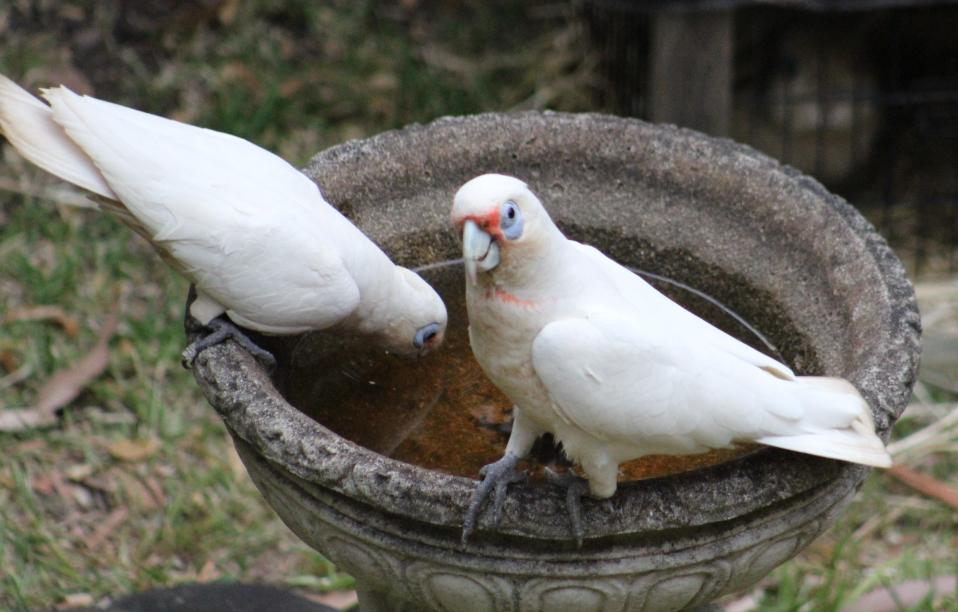
PNHA Bushcare Grants For Mona Vale Dunes And Avalon Golf Course: A Great Option For Duke Of Ed. 2020 Aspirants



Narrabeen Beach & Lagoon Clean Up 2020
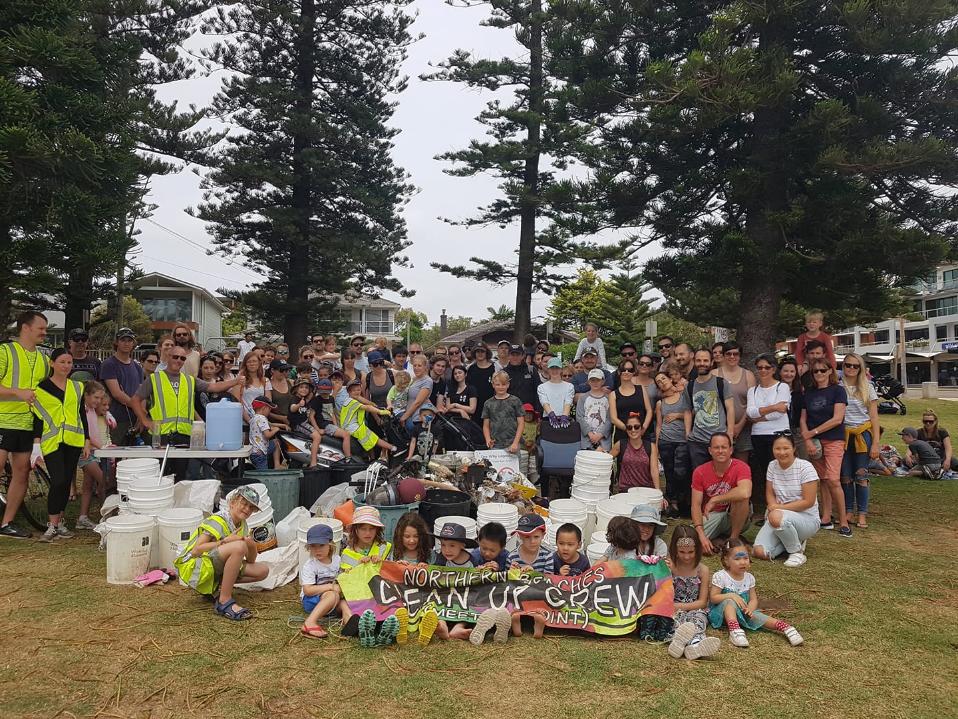
Avalon Boomerang Bags Summer Time 2020: Workshops Resume January 28th
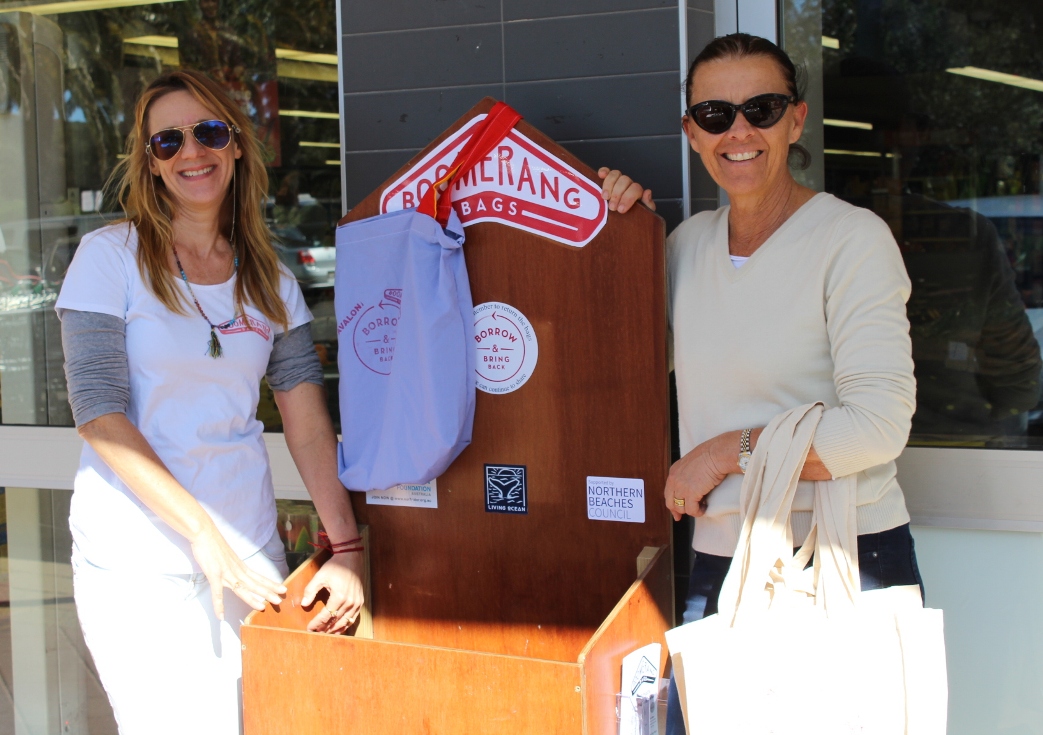
Warriewood Wetlands Twilight Walk
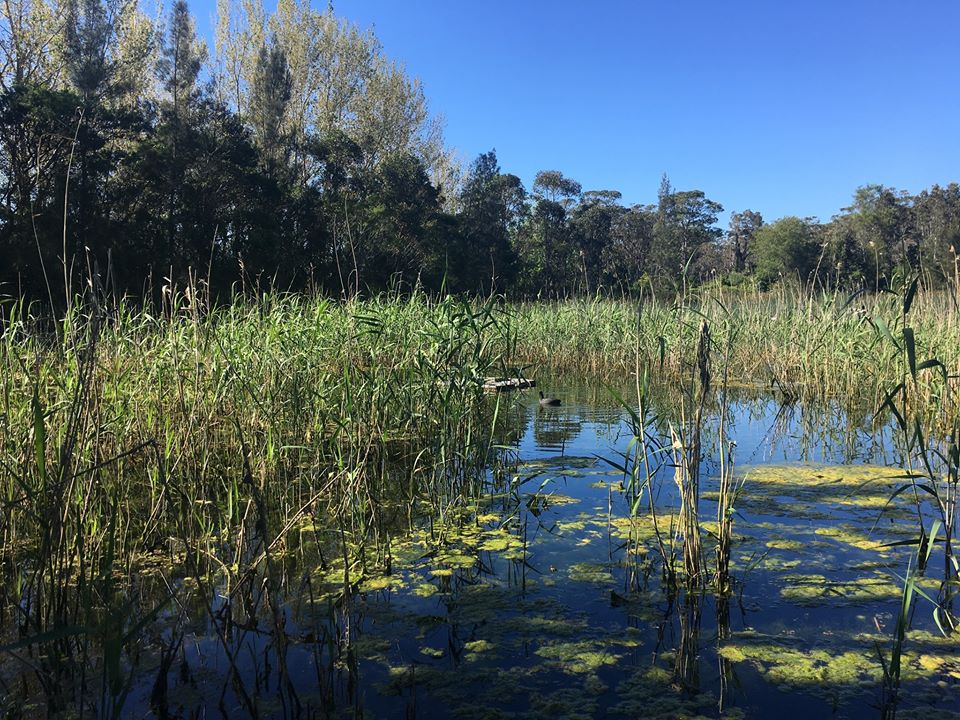
Save The Northern Beaches From Blasting And Drilling For Gas Event In Manly: Zali Steggal MP & Abigail Boyd MP Speakers
Friends Of Narrabeen Lagoon February 2020 Forum - Catchment Secrets Of Narrabeen Lagoon Catchment: Discoveries So Far In The 21st Century
 Next Forum: 7pm Monday Feb 24, 2020
Next Forum: 7pm Monday Feb 24, 2020Friends Of Narrabeen Lagoon Catchment: Bushwalks 2020
PNB 1st Meeting For 2020: Habitat Protection
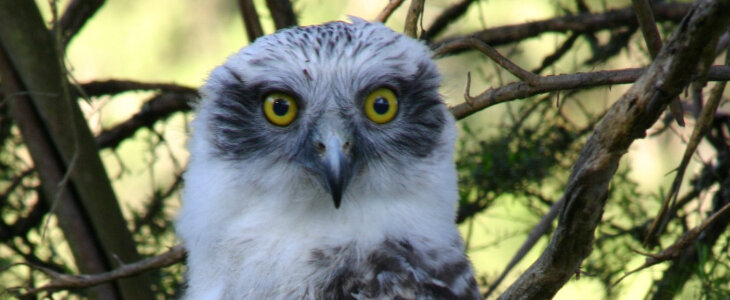
Bushcare In Pittwater
Where we work Which day What time
Avalon
Angophora Reserve 3rd Sunday 8:30 - 11:30am
Avalon Dunes 1st Sunday 8:30 - 11:30am
Avalon Golf Course 2nd Wednesday 3 - 5:30pm
Careel Creek 4th Saturday 8:30 - 11:30am
Toongari Reserve 3rd Saturday 9 - 12noon (8 - 11am in summer)
Bangalley Headland 2nd Sunday 9 to 12noon
Bayview
Winnererremy Bay 4th Sunday 9 to 12noon
Bilgola
North Bilgola Beach 3rd Monday 9 - 12noon
Algona Reserve 1st Saturday 9 - 12noon
Plateau Park 1st Friday 8:30 - 11:30am
Church Point
Browns Bay Reserve 1st Tuesday 9 - 12noon
McCarrs Creek Reserve Contact Bushcare Officer To be confirmed
Clareville
Old Wharf Reserve 3rd Saturday 8 - 11am
Elanora
Kundibah Reserve 4th Sunday 8:30 - 11:30am
 Mona Vale
Mona Vale Mona Vale Beach Basin 1st Saturday 8 - 11am
Mona Vale Dunes 2nd Saturday +3rd Thursday 8:30 - 11:30am
Newport
Bungan Beach 4th Sunday 9 - 12noon
Crescent Reserve 3rd Sunday 9 - 12noon
North Newport Beach 4th Saturday 8:30 - 11:30am
Porter Reserve 2nd Saturday 8 - 11am
North Narrabeen
Irrawong Reserve 2nd Saturday 2 - 5pm
Palm Beach
North Palm Beach Dunes 3rd Saturday 9 - 12noon
Scotland Island
Catherine Park 2nd Sunday 10 - 12:30pm
Elizabeth Park 1st Saturday 9 - 12noon
Pathilda Reserve 3rd Saturday 9 - 12noon
Warriewood
Warriewood Wetlands 1st Sunday 8:30 - 11:30am
Whale Beach
Norma Park 1st Friday 9 - 12noon
Western Foreshores
Coopers Point, Elvina Bay 2nd Sunday 10 - 1pm
Rocky Point, Elvina Bay 1st Monday 9 - 12noon
Gardens And Environment Groups And Organisations In Pittwater
Pittwater Reserves
A Keynote Speech Delivered By HRH The Prince Of Wales At The World Economic Forum In Davos, Switzerland
Do we want to go down in history as the people who did nothing to bring the world back from the brink in time to restore the balance when we could have done? I don’t want to. And just think for a moment – what good is all the extra wealth in the world, gained from “business as usual”, if you can do nothing with it except watch it burn in catastrophic conditions?

Grants Available To Reduce Climate Change Impacts
Foundation For National Parks & Wildlife Community Conservation Grants Are Now Open For Applications
- Land and Water - Protection, restoration, rehabilitation and revegetation of degraded habitats to ensure their ability to sustain native species.
- Threatened Species - Scientific research with tangible conservation outcomes and on-ground works to conserve Australia’s threatened species.
- Cultural Heritage - Conserving and celebrating Australia’s cultural heritage as part of the gift we leave to future generations.
- Parks for People - Improving National Park facilities for the enjoyment of all, to foster and encourage the appreciation of nature.
Koala Sightings On The Central Coast
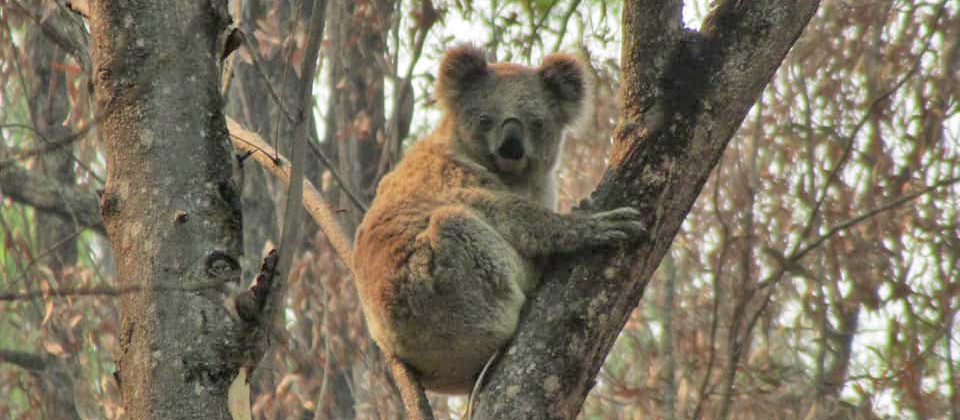
Rain Enables Myall Lakes National Park To Reopen
- the Mining Road fire trail
- the Mungo walking track.
National Parks And Wildlife Service Re-Opens Key Tourist Sites Over The Weekend
- Govetts Leap lookout and the Blue Mountains Heritage Centre
- Fairfax Track
- Evans Leap lookout
- Katoomba, Leura and Wentworth Falls walking tracks including Federal Pass between Scenic World and Fern Bower
- Empress Falls and canyon
- Glenbrook precinct and the Euroka campground
- Victoria Falls Road fire trail
- Faulconbridge Point
- Blue Gum Swamp
- Ingar and Murphys Glen campgrounds
- Woodford-Oaks track
- Narrow Neck (Glenraphael Drive as far as the locked gate only – not safe beyond this point)
- Braeside fire trail (not walk)
- Nellies Glen
- Grand Canyon walk
- Clifftop walks between Evans, Govetts and Pulpit Rock including Braeside walk and fire trail
- Burramoko (Hanging Rock) fire trail
National Parks Reopen In Time For Australia Day Weekend
- Bald Rock National Park (sections reopening)
- Boonoo Boonoo National Park (sections reopening)
- Kwiambal National Park
- Basket Swamp National Park
- Kings Plain National Park
- Mount MacKenzie Nature Reserve
- Little Llangothlin Nature Reserve
Conservation Scientists Are Grieving After The Bushfires – But We Must Not Give Up
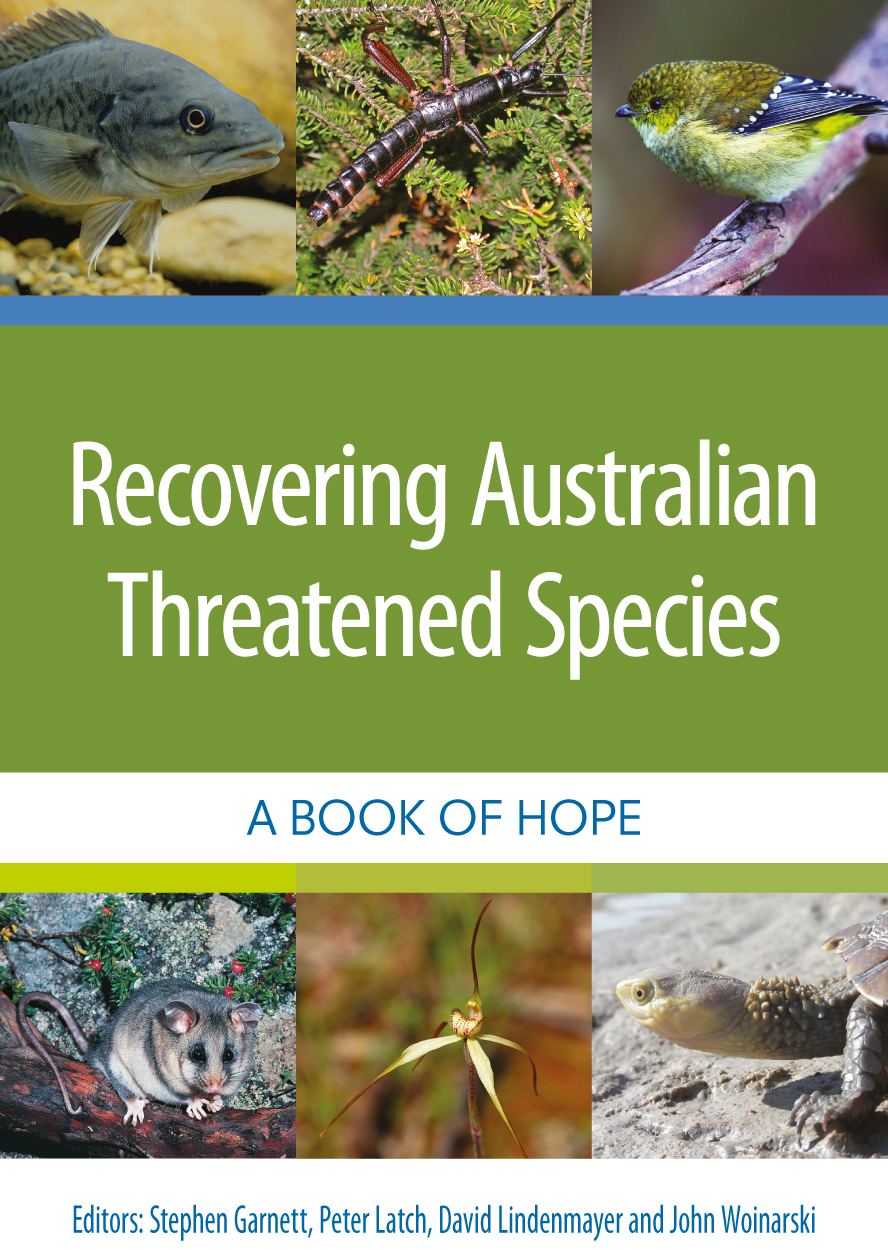 Federal government figures released on Monday showed more than half of the area occupied by about 115 threatened species has been affected by fire. Some of these species will now be at significantly greater threat of extinction. They include the long-footed potoroo, Kangaroo Island’s glossy black-cockatoo and the East Lynne midge orchid.
Federal government figures released on Monday showed more than half of the area occupied by about 115 threatened species has been affected by fire. Some of these species will now be at significantly greater threat of extinction. They include the long-footed potoroo, Kangaroo Island’s glossy black-cockatoo and the East Lynne midge orchid.Many of our plants and animals have adapted to fires, but now the fires are changing
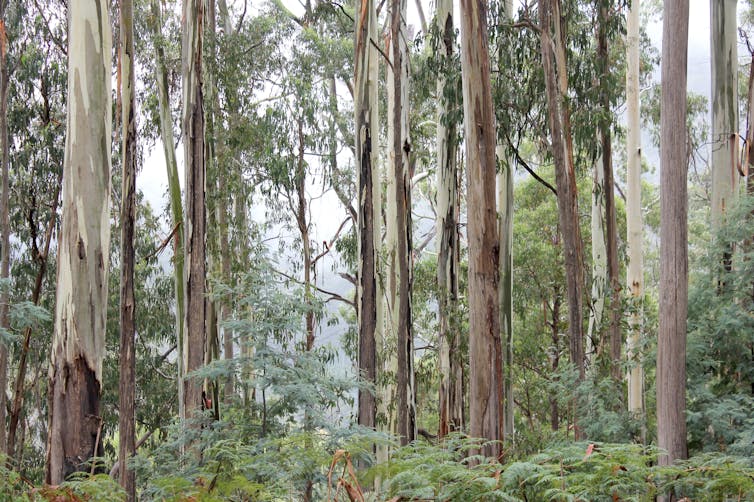
Australia is a land that has known fire. Our diverse plant and animal species have become accustomed to life with fire, and in fact some require it to procreate.
But in recent decades the pattern of fires – also known as the fire regime – is changing. Individual fires are increasingly hotter, more frequent, happening earlier in the season and covering larger areas with a uniform intensity. And these changes to the fire regime are occurring too fast for our native flora and fauna to adapt and survive.
Read more: Some say we've seen bushfires worse than this before. But they're ignoring a few key facts
Our Fire-Adapted Plants Are Suffering
Many of Australia’s iconic eucalypts are “shade intolerant” species that adapted to exist within a relatively harsh fire regime. These species thrive just after a major fire has cleared away the overstory and prepared an ash bed for their seeds to germinate.
Some of our most majestic trees, like the alpine ash, can only regenerate from seed. Those seeds germinate only on bare earth, where the leaf litter and shrubs have been burnt away.
But if fire is so frequent the trees haven’t matured enough to produce seed, or so intense it destroys the seeds present in the canopy and the ground, then even these fire-adapted species can fail.
The current fires are re-burning some forests that were burnt only a decade ago. Those regenerating trees are too young to survive, but also too young to have started developing seed.
With the disappearance of these tree species, other plants will fill the gap. Acacias (wattles) are potential successors as they mature much earlier than alpine ash. Our tall, majestic forests could easily turn into shrubby bushland with more frequent fires.

Even within a burnt area, there are usually some unburnt patches, which are highly valuable for many types of plants and animals. These patches include gullies and depressions, but sometimes are just lucky coincidences of the terrain and weather. The patches act as reserves of “seed trees” to provide regeneration opportunities.
Recent fires, burning in hotter and drier conditions, are tending to be severe over large areas with fewer unburnt patches. Without these patches, there are no trees in the fire zone to spread seeds for regeneration.
Eucalypt seed is small and without wings or other mechanisms to help the wind disperse it. Birds don’t generally disperse these seeds either. Eucalypt seed thus only falls within 100 - 200 metres of the parent tree. It may take many decades for trees to recolonise a large burnt area.
That means wind-blown or bird-dispersed seeds from other species may fully colonise the burnt area well before the Eucalypts. Unfortunately many of these windblown seeds will be weed species, such as African Love Grass, which may then cover the bare earth and exclude successful Eucalypt regeneration while potentially making fires even hotter and more frequent.
Animals Have Fewer Places To Hide
Young animals are significantly more vulnerable to disturbances such as fire than mature individuals. So the best time to give birth is a season when fire is rare.
Spring in the southern zones of Australia has, in the past, been wetter and largely free from highly destructive fires. Both flora and fauna species thus time their reproduction for this period. But as fire seasons lengthen and begin earlier in the year, vulnerable nestlings and babies die where they shelter or starve as the fires burn the fruits and seeds they eat.
Australian fauna have developed behaviours that help them survive fire, including moving towards gullies and depressions, climbing higher, or occupying hollows and burrows (even if not their own) when they sense fire.
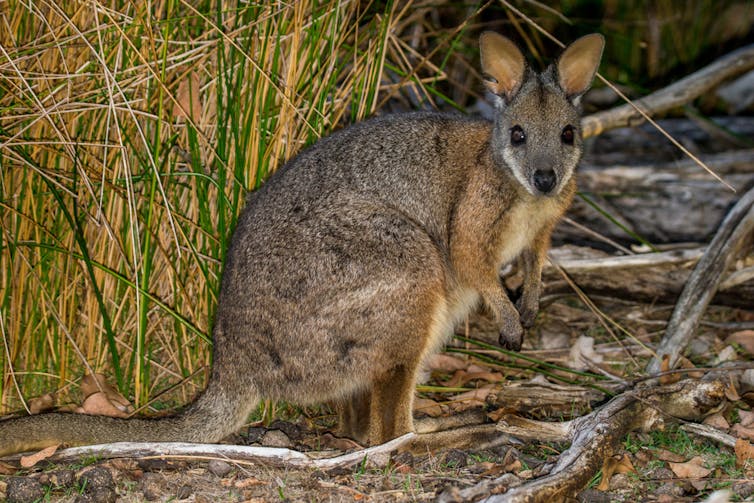
But even these behaviours will fail if those refuges are uncharacteristically burning under hotter and drier conditions. Rainforest, marshes and the banks of watercourses were once safe refuges against fire, but we have seen these all burn in recent fires.
Read more: Animal response to a bushfire is astounding. These are the tricks they use to survive
What Can Be Done?
All aspects of fire regimes in Australia are clearly changing as a result of our heating and drying climate. But humans can have a deliberate effect, and have done so in the past.
Indigenous burning created a patchwork of burnt areas and impacted on the magnitude and frequency of fires over the landscape. These regular burns kept the understory under control, while the moderate intensity and patchiness allowed larger trees to survive.
There have been repeated calls of late to reintroduce Indigenous burning practices in Australia. But this would be difficult over vast areas. It requires knowledgeable individuals to regularly walk through each forest to understand the forest dynamics at a very fine scale.
More importantly, our landscapes are now filled with dry fuel, and shrubs that act as “ladders” - quickly sending any fire into tree canopies to cause very destructive crown fires. Given these high fuel conditions along with their potentially dangerous distribution, there may be relatively few safe areas to reintroduce Indigenous burning.
The changed fire conditions still require active management of forests, with trained professionals on the ground. Refuges could be developed throughout forests to provide places where animals can shelter and from which trees can recolonise. Such refuges could be reintroduced by reducing forest biomass (or fuel) using small fires where feasible or by mechanical means.
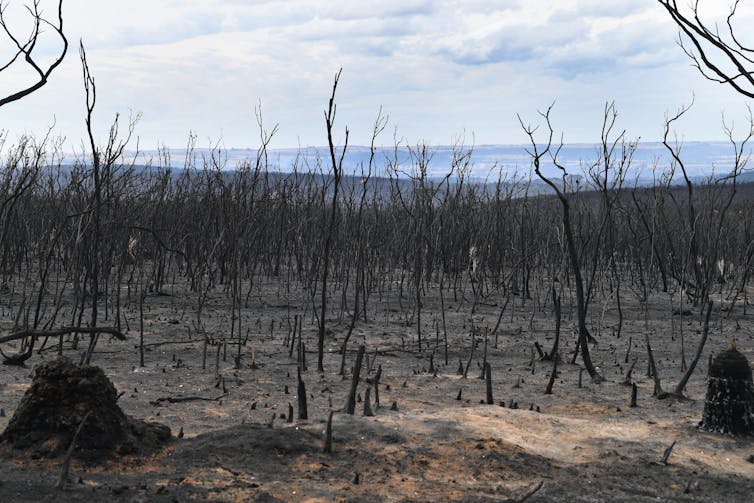
Biomass collected by machines could be used to produce biochar or other useful products. Biochar could even be used to improve the soil damaged by the fires and excess ash.
Midstory species could be cut down to prevent the development of fire ladders to tree crowns. Even the overstory could be thinned to minimise the potential for crown fires. Seed could also be collected from thinned trees to provide an off-site bank as ecological insurance.
Such active management will not be cheap. But using machinery rather than fire could control biomass quantity and distribution in a much more precise way: leaving some biomass on the ground as habitat for insects and reptiles, and removing other patches to create safer refuges from the fires that will continue to come.![]()
Cris Brack, Associate Professor, Fenner School of Environment and Society, Australian National University
This article is republished from The Conversation under a Creative Commons license. Read the original article.
How an Aussie invention could soon cut 5% of the world's greenhouse gas emissions
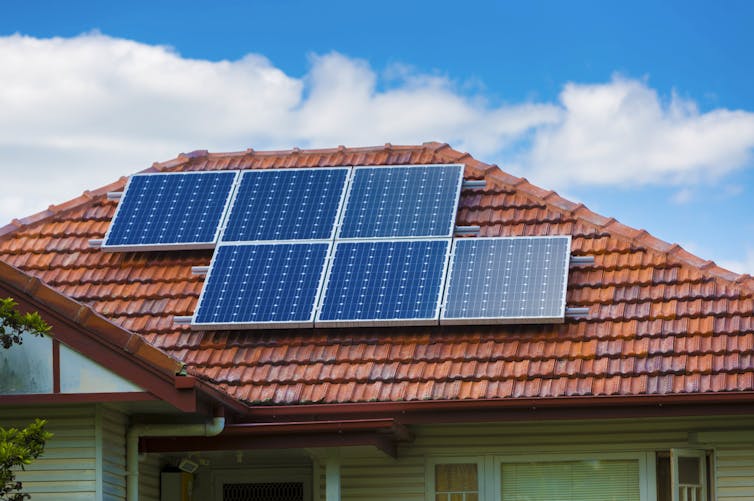
In the 1980s, a global race was underway: to find a more efficient way of converting energy from the sun into electricity.
Some 30 years ago, our research team at the University of New South Wales (UNSW) came up with a breakthrough, called the PERC silicon solar cell. The cells have become the most widely deployed electricity generation technology in terms of capacity added globally each year – comfortably exceeding wind, coal, gas, hydro and others.
Read more: Curious Kids: how do solar panels work?
PERC stands for Passivated Emitter and Rear Cell. By the end of this year, PERC technology will be mitigating about 1% of global greenhouse gas emissions by displacing coal burning. Assuming that its rapid growth continues, it should be reducing greenhouse gas emissions by 5% by the mid-2020s and possibly much more in later years.
The terrible bushfires in Australia this summer, enhanced by the hottest and driest year on record in 2019, underline the need for urgent reductions in greenhouse gas emissions. By far the most effective way is driving coal out of electricity systems through very rapid deployment of solar and wind.
Soon, our Aussie invention will be generating half the world’s solar power. It is a pertinent reminder of Australia’s capacity for finding transformative technical solutions to address climate change. But we need the right government support.
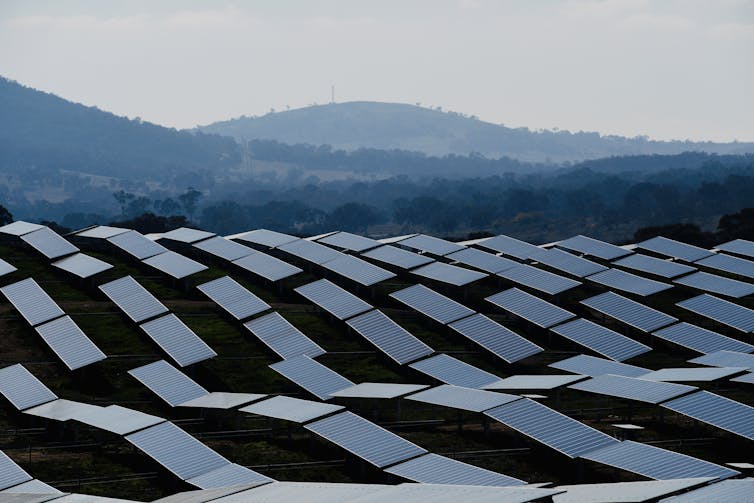
An Aussie Invention
Solar cells convert sunlight directly into electricity without moving parts. More efficient solar cells generally produce cheaper electricity because fewer solar cells, glass covers, transport, land and support structures are needed for a given solar power output.
By the early 1980s, the best laboratory cells around the world had reached 17% efficiency. This means that 17% of the sunlight was converted to electricity, and the rest (83%) of the solar energy was lost (as heat).
During the 1980s, our research team at UNSW led by Martin Green and myself created a series of world-record-efficient silicon solar cells. We reported 18% efficiency in 1984, 19% efficiency also in 1984, and the important milestone of 20% efficiency in 1986.
Read more: Some good news for a change: Australia's greenhouse gas emissions are set to fall
In 1989 our group reported a new solar cell design called “PERC”, with a record efficiency of 22-23%.
This new, more efficient cell was better than the old ones because we eliminated some defects in the silicon crystal surface, which led to lower electronic losses. The PERC design also enabled us to capture the sunlight more effectively.
In the 1990s, further improvements to laboratory PERC cells were made at UNSW, leading to cells in the 24-25% efficiency range. The global silicon solar cell efficiency record remained at UNSW until recently.
There was a 25-year gap between development of the PERC cell and its rapid commercial adoption, which began in 2013. During this time, many people worked to adapt the PERC design to commercial production.
PERC cells are more efficient than previous commercial cells. Strong incentives for more efficient cells have recently arisen due to the continually falling share of cell costs as a proportion of total solar power system costs (including transport, land and mounting systems).
The Big Benefits Of Solar
Currently, solar power constitutes more than 40% of net new electricity generation capacity additions, with fossil, nuclear, wind, hydro and other renewables making up the balance.
Solar is growing faster than the other electricity generation technologies. Over time, as fossil-fuelled power stations are retired, solar (and wind) will dominate electricity production, with consequent large reductions in greenhouse gas emissions.
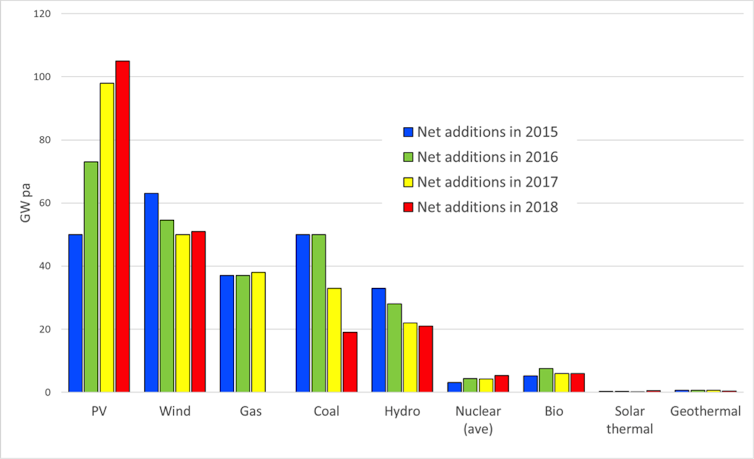
This year, enough PERC solar modules will be sold to generate 60-70 gigawatts of power. According to projections, PERC will reach three quarters of annual solar module sales in the mid-2020s, enough to match the generation capacity additions from all other technologies combined.
About A$50 billion worth of PERC modules have been sold to date. This is expected to reach several hundred billion Australian dollars later this decade.
Just Imagine
Australian emissions (excluding those from bushfires) are falling because we are installing solar and wind four times faster per capita than the EU, US, Japan and China.
Our position as a global leader in renewables installation is uncertain because the Renewable Energy Target, which was achieved in 2019, has not been extended.
Read more: Weather bureau says hottest, driest year on record led to extreme bushfire season
With supportive policy, such as facilitating more transmission to bring solar and wind power to the cities, Australia could greatly increase the speed at which wind and solar are deployed, yielding rapid and deep cuts at about zero-net cost.
Such policy would entail stronger and sustained government support for renewables deployment, and research and development of new technologies.
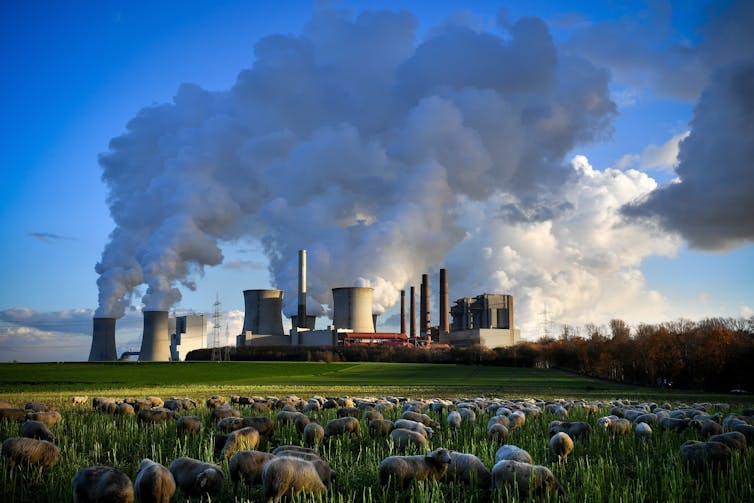
Looking Ahead
Solar energy is vast, ubiquitous and indefinitely sustainable. Simple calculations show that less than 1% of the world’s land area would be required to provide all of the world’s energy from solar power – much of it on building roofs, in deserts and floating on water bodies.
Solar systems use only very common materials (we could never run out), have minimal need for mining (about 1% of that needed for equivalent fossil or nuclear fuels), have minimal security and military risks (we will never go to war over solar access), cannot have significant accidents (unlike nuclear), and have minimal environmental impact over unlimited time scales.
Australia is making major contributions to mitigating climate change both through rapid deployment of wind and solar and technology development such as our PERC cells. But with better government support, much more can be done – quickly and at low cost.![]()
Andrew Blakers, Professor of Engineering, Australian National University
This article is republished from The Conversation under a Creative Commons license. Read the original article.
Aussie Bread Tags Collection Points

Back To School 2020: Have A Great Term 1!

‘What Subjects Do I Choose For My Last Years Of School?’
We are being asked to do work experience this year, in a field we might like to work in. We are being asked to think about choosing electives that are directing us towards our career choices.I have no idea what I want to do! I haven’t yet found anything I am particularly good at. I feel like I am being left behind. That others are making choices about their lives that I am not prepared for yet. Is this normal? - Lachlan, year 10
- Many young people feel this way – it is normal!
- locking yourself into one career path too early can be risky
- it’s important to be flexible and learn transferable skills
- ask lots of questions from people around you.
- Develop short-term, medium and long-term goals. You’ll find great resources to help with this at Headspace.
- Youth Central’s Career Profiles give lots of detail about how interests turn into careers, and the pathways people took to get there.
Read more: Don't stress, your ATAR isn't the final call. There are many ways to get into university
- My Future has fantastic resources including quizzes that will help learn more about what might suit you. You can also match up school subjects with career pathways.
2020 Enrolled Nurse Scholarships Open
Discover Seven Worlds, One Planet In VR360
Curious Kids: Why Does Reading In The Back Seat Make You Feel Sick?
Why does reading in the back seat make you feel sick? – Jane, aged 10, from Coburg North, Australia.
- the outer ear is the bit you can see on the side of someone’s head
- the middle ear is your eardrum and some tiny bones and muscles
- the inner ear is the part of your ear that can help with your balance.
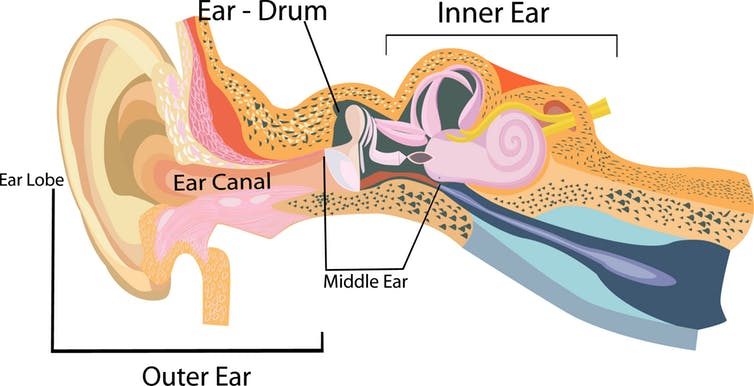

Activation Of A Distinct Genetic Pathway Can Slow The Progress Of Metastatic Breast Cancer
Long Hours Double Junior Doctors' Risk Of Mental Illness And Suicide
For Youth:
Kids Helpline: 1800 551 800
Headspace: 1800 650 890
ReachOut: au.reachout.com
For Adults:
Lifeline: 13 11 14
Beyond Blue:1300 22 46 36.
Suicide Callback Service: 1300 659 467
MensLine Australia: 1300 789 978
W.A.: Earth's Oldest Asteroid Strike Linked To 'Big Thaw'
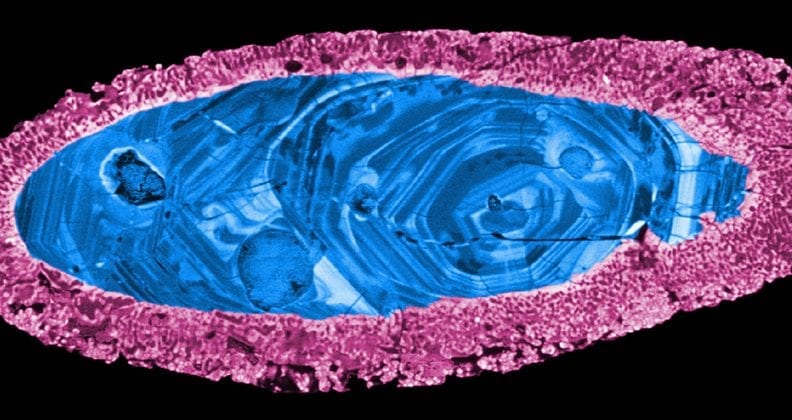
Sea Level Rise Could Reshape The United States; Trigger Migration Inland
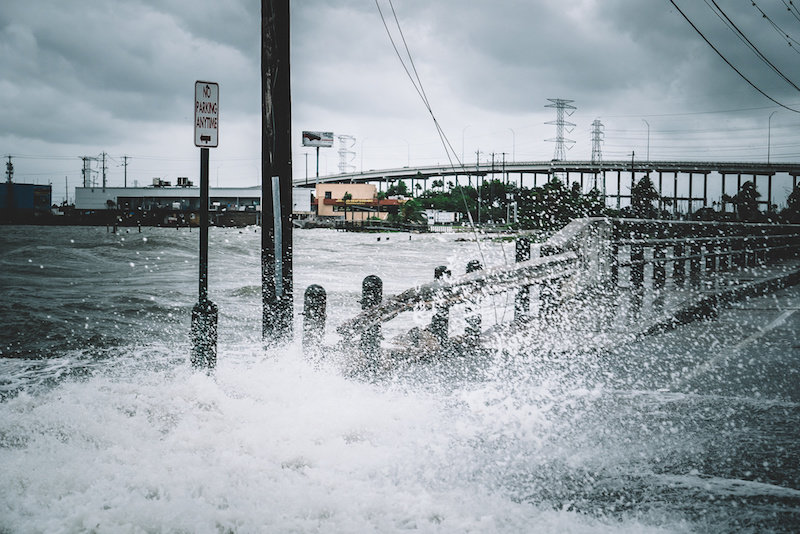
The Mysterious Legendary Giant Squid's Genome Is Revealed
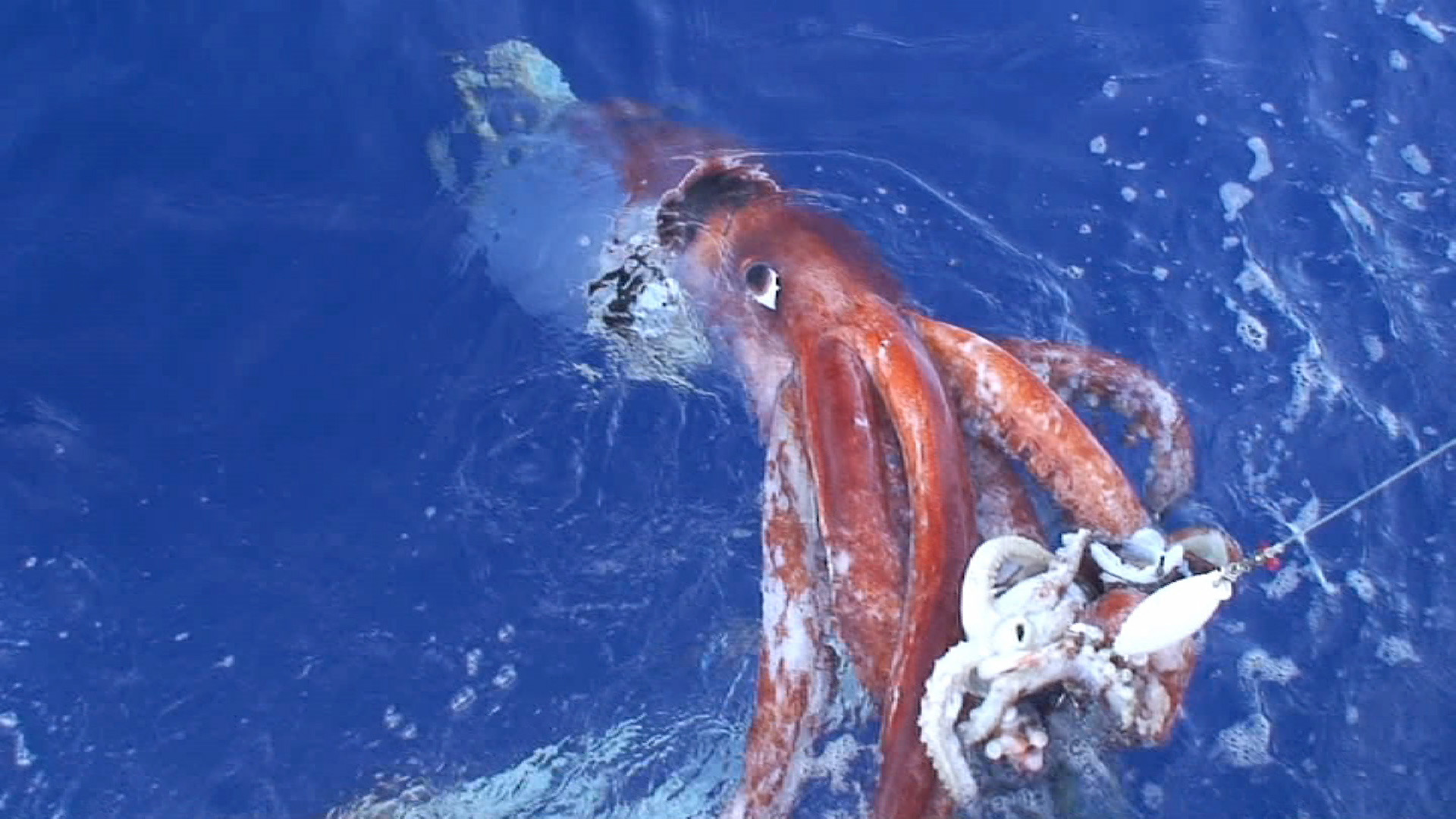
Setting Controlled Fires To Avoid Wildfires
Dwindling Inflows Into Catchment Areas – A Water Supply Disaster In The Making?
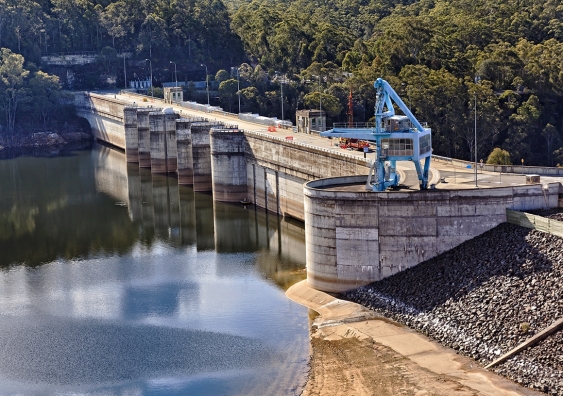
Most Rehabilitating Sea Turtles With Infectious Tumours Don't Survive
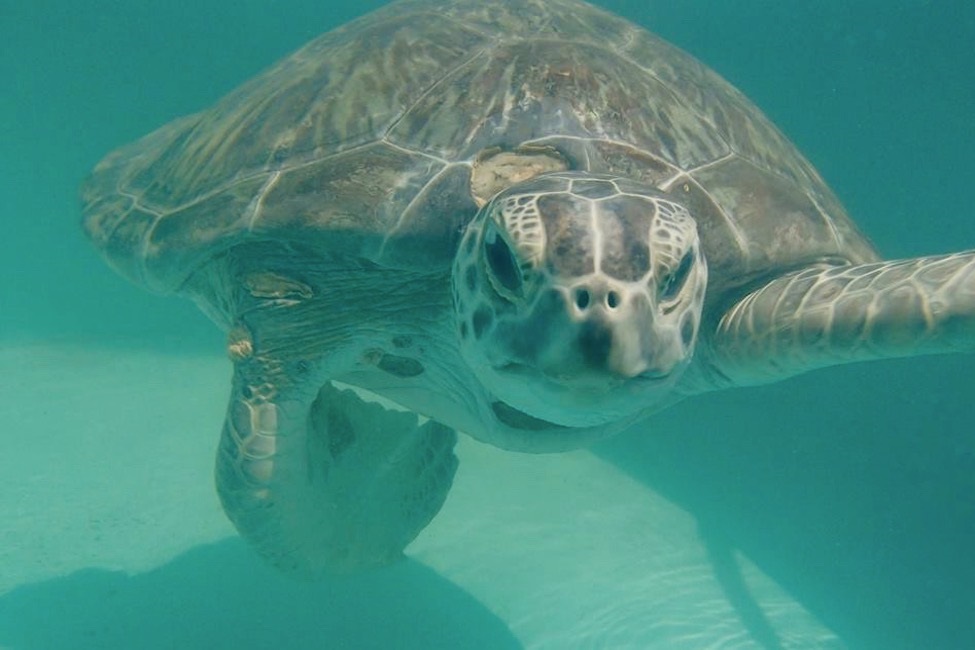
Dozens Of Non-Oncology Drugs Can Kill Cancer Cells
Disclaimer: These articles are not intended to provide medical advice, diagnosis or treatment. Views expressed here do not necessarily reflect those of Pittwater Online News or its staff.